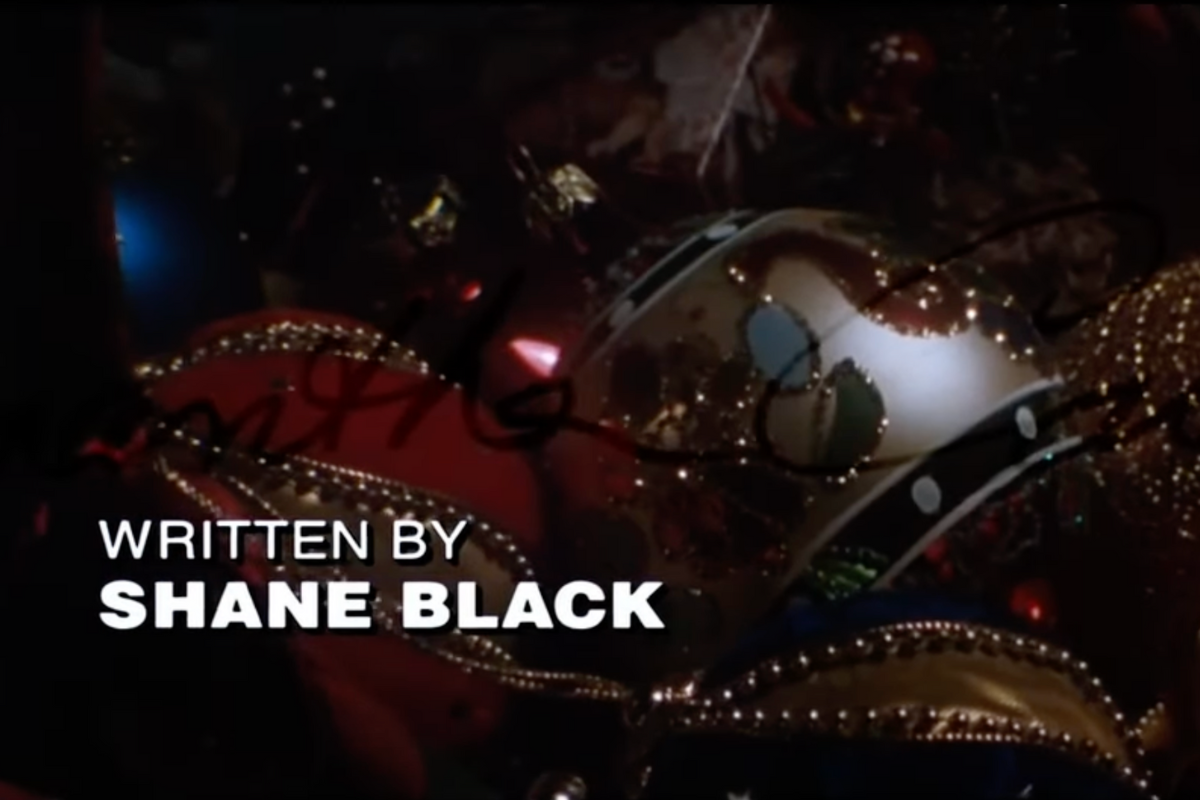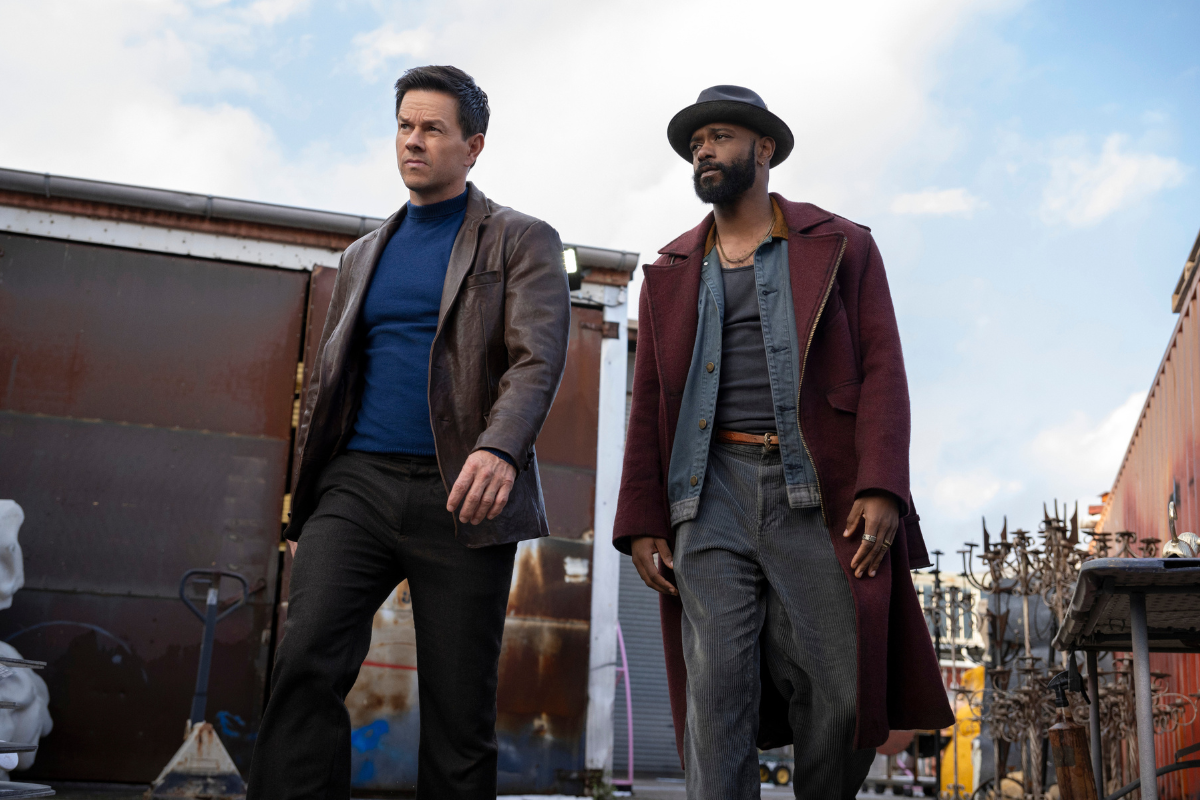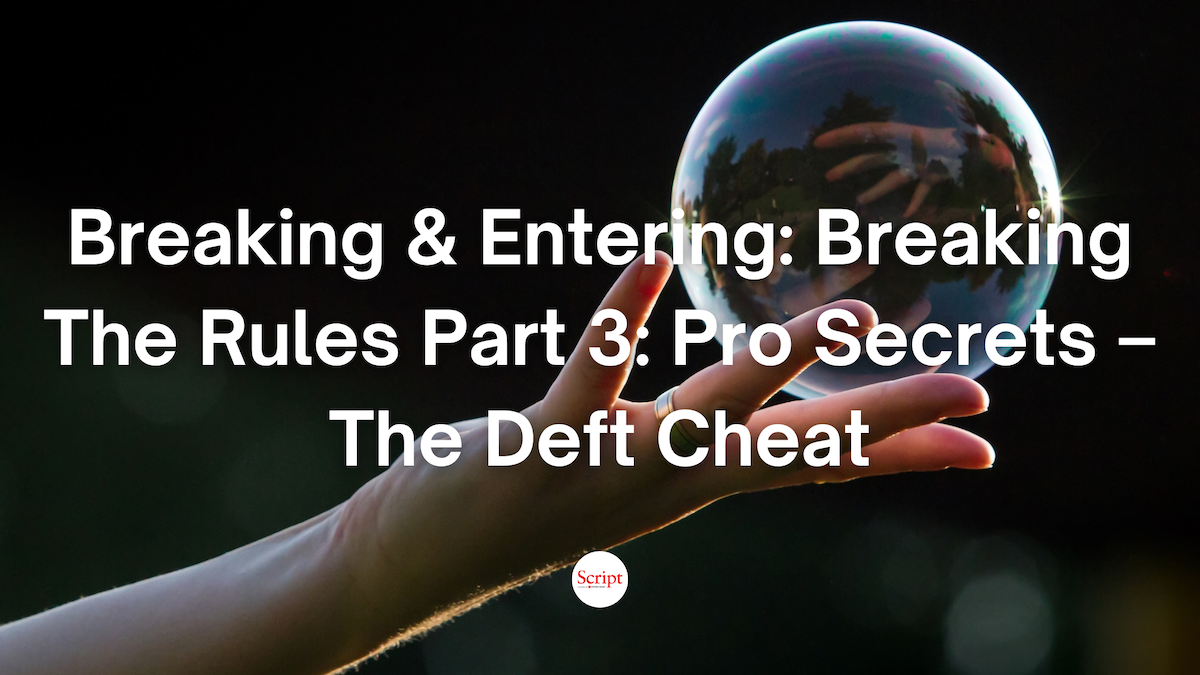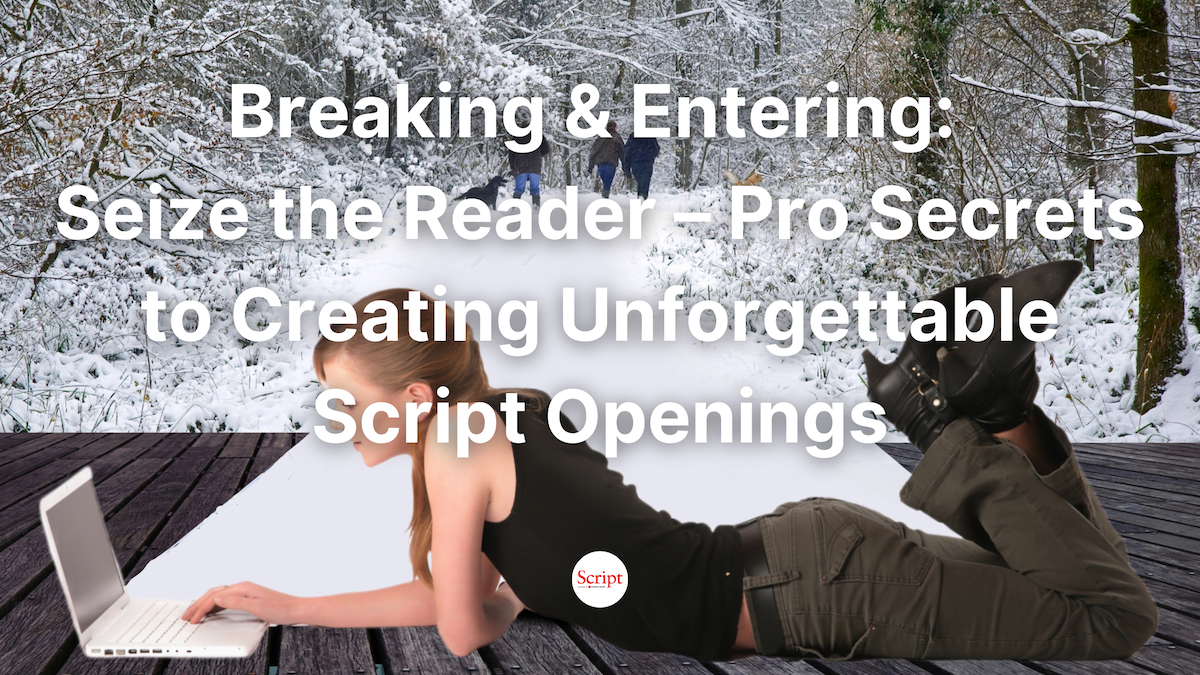Breaking & Entering: The Elephant in the Room – The Mighty Metaphor
Metaphor is a secret weapon that can elevate your script from good to unforgettable. Discover how to add emotional depth, visual symbols, and resonant themes.
The most searched phrase by aspiring and emerging screenwriters? “How to write a screenplay.”
That’s pretty generic. Barebones.
Would you rather learn how to:
- Write a great script
- Craft an award-winning screenplay
- Create a script that knocks people’s socks off
If you picked “knocks people’s socks off,” you’re reading the right article. Because you’ve just proven the thesis:
Metaphors are more engaging than concrete information.
Of course, your script won’t literally leave people barefoot. But the metaphor is more compelling. It feels more exciting, emotional, and meaningful.
Metaphors are more captivating than literal language. That’s not just an opinion—it’s backed by research. And by the quiz you just took without realizing it.
“Metaphor” comes from the Latin for “to transfer,” and that’s exactly what it does: transfers meaning. It’s a way of saying one thing is another to make it clearer, deeper, or more resonant.
Time is money.
Life is a journey.
Love is a battlefield.
The ball is in your court.
You’re walking on thin ice.
These are familiar because they reflect shared human experiences. That’s what makes metaphor so powerful in description, dialogue, and visual storytelling. Even used subtly or subverted creatively, metaphors deliver instant recognition and emotional resonance. They’re embedded in every culture and in our ordinary ways of speaking, thinking, and acting.
Time isn’t literally money, but the two are so intertwined that we speak as if they are. In 1978, UC Berkeley professor George Lakoff explored this deeply in Conceptual Metaphor in Everyday Language, co-authored with Mark Johnson. Their groundbreaking work showed that metaphors don’t just influence language—they shape how we think.
“Time in our culture is a valuable commodity. It is a limited resource that we use to accomplish our goals… Work is typically associated with the time it takes and time is precisely quantified. It has become customary to pay people by the hour, week or year. In our culture, time is money in many ways.”
You’re wasting my time.
How do you spend your time?
That flat tire cost me an hour.
I’ve invested a lot of time in them.
You’re running out of time.
You need to budget your time.
I lost a lot of time when I got sick.
Metaphors distill complexity. They let you say more with less —conveying emotion and abstract ideas leanly and vividly.
They also engage the imagination. They light up our senses, evoke images and emotions, and speak to us on a subconscious level. Metaphor can make your writing more cinematic, elevate your writer’s voice, and give your story lasting impact.
It is the East, and Juliet is the Sun
You might think of metaphor as the stuff of literature, but it’s deeply embedded in how we speak and think. It belongs in your script.
Using metaphor in scene description can set tone, underscore subtext, and reveal character.
One of my consulting clients now has a script headed toward production. But in their previous screenplay, each new setting listed everything in the room. It read incredibly flat, what I call a “laundry list.” In their latest script, they were more confident as a writer and could focus on atmosphere and meaning. In the hero’s studio apartment, the furniture looked as if it was “rescued from the curb.” Fewer words, but far more information about setting, character, and conflict. And their distinctive voice came through, attracting a producer and a director.
“Description begins in the writer’s imagination, but should finish in the reader’s.” – Stephen King
Great description is literature. It should spark emotion, not drown us in detail. The best writing gives us space to imagine and feel.
Scientific studies show that metaphors light up multiple regions of the brain and cause pupil dilation—both signs of cognitive and emotional engagement. Yes, I read the research papers so you don’t have to.
You Said a Mouthful
“Luca Brasi sleeps with the fishes.” The Godfather
A metaphorical way of saying someone is dead, this is now part of our cultural lexicon. It reflects the film’s themes of secrecy, tradition, and coded communication.
“You either die a hero, or you live long enough to see yourself become the villain.” The Dark Knight
A metaphor and philosophical thesis rolled into one. It reframes heroism as a time-based transformation—a descent that echoes the film’s moral complexity of corruption, identity, and legacy.
“Life is like a box of chocolates.” Forrest Gump
An iconic line, homespun and metaphorical. It captures life’s unpredictability with one relatable image.
Metaphorical dialogue works best when it feels authentic to the character. It shouldn’t sound as if you’re trying to write a line that will become legendary. The most effective lines come from character voice—their history, worldview, and emotional state.
A Rose by Any Other Name
Don’t underestimate the metaphorical potential of your title. A title with multiple meanings or one that becomes clear by the end of the story can reinforce your theme.
When it comes to a title rich in metaphor, Adaptation, written by Charlie Kaufman, is hard to top. The title is literal, structural, character-driven, and thematic all at once. It speaks to creative evolution, biological survival, and identity. Metaphor is at the core of the story, inspired by his own struggle to adapt Susan Orlean's non-fiction book, The Orchid Thief, into a film while suffering from writer’s block.
Kaufman even splits himself into two characters: Charlie, the anxious, insecure, and blocked writer, and Donald, his outgoing, upbeat, cliché-loving, fictional twin brother. Their dynamic embodies the push-pull between fear and action. Their duality is a metaphor for the struggle between art and entertainment.
The film’s structure itself becomes a metaphor—shifting from thoughtful character study into fast-paced Hollywood thriller. The story—like its characters—must adapt emotionally, creatively, and existentially, to survive.
Seeing is Believing
In my column, “Seize the Reader – Pro Secrets to Creating Unforgettable Script Openings”, I discussed scripts likeMemento andBreaking Bad, which use formidable opening imagery as thematic microcosms.
In Jaws, written by Peter Benchley and Carl Gottlieb, the shark is more than a monster—it’s fear, capitalism, and nature’s revenge. The less we see it, the more we feel it.
In Inception, written and directed by Christopher Nolan, Cobb’s spinning top is a metaphor for reality vs. illusion. The film ends before we know whether it falls, underscoring the blurred line between dreams and reality.
In The Matrix, written by Lana and Lilly Wachowski, the red and blue pills symbolize the conscious choice between difficult truth and comfortable illusion. It’s become cultural shorthand. Watch the scene here.
Each of these works because the metaphor is cinematic—it visualizes deeper truths without exposition.
Hit the Nail on the Head
Metaphors rely on shared recognition. But cliché will kill their power. As your neuroscience geek columnist has mentioned many times, the brain craves novelty and quickly tunes out what is overused and familiar. Be wary of mixed metaphors—you don’t want to find yourself out on a limb without a paddle!
The best metaphors emerge organically from character, conflict, and theme. Subtlety is magnetic, offering new revelations on repeated viewings and thoughtful discussion. Like the perfect croissant or a slice of baklava, meaning should be layered and shaped.
One writing exercise I do with students is to identify their Three Forever Films—movies they could watch endlessly—to help them discover their Personal Thematic. These are the messages that speak deeply to you. Try the exercise here.
When I rewatch my Forever Films, I notice new, deft touches every time:
In Jaws, when Brody sees his son in the water as the shark appears, he’s paralyzed at the water’s edge. All the other parents rush in. That image of him literally on tiptoe speaks volumes about his fear and internal conflict.
In The Shawshank Redemption, written and directed by Frank Darabont, there are numerous parallels between Brooks and Red being released from prison. But until I was writing a column about suspense, I didn’t realize that they are framed identically as they each climb up on the chair in the boarding house, including the angle of their eyes looking up at the beam. That visual callback raises stakes and ratchets up the tension in a narrative that plays out over decades.
In Jerry Maguire, written and directed by Cameron Crowe, Dorothy’s subtle shift in expression and posture when she realizes Jerry doesn’t love her underscores both character and theme, and sets the plot in motion.
The More You Know
“The elephant in the room” is a metaphor for a truth everyone sees but avoids. It’s uncomfortable, so we pretend it’s not there. But it doesn’t vanish.
In screenwriting, it’s easy to obsess over formatting minutiae—ALL CAPS or not, semicolon or em dash. The real challenge is grappling with metaphor, which demands thought, precision, and risk. But the payoff? Enormous.
“But the greatest thing by far is to be a master of metaphor. It is the one thing that cannot be learnt from others; and it is also a sign of genius, since a good metaphor implies an intuitive perception of the similarity in dissimilars.”
Metaphor adds depth, transforming the literal into the symbolic. It is the bridge between what your story says and what it means. When used well, it’s not merely mighty—it’s unforgettable.
That is how you knock people’s socks off!
Barri Evins draws on decades of industry experience to give writers practical advice on elevating their craft and advancing their career. Her next SCREENWRITING ELEVATED online seminar with 7 monthly sessions plus mentorship will be announced in 2025. Breaking & Entering is peppered with real life anecdotes – good, bad, and hilarious – as stories are the greatest teacher. A working film producer and longtime industry executive, culminating in President of Production for Debra Hill, Barri developed, packaged, and sold projects to Warners, Universal, Disney, Nickelodeon, New Line, and HBO. Known for her keen eye for up and coming talent and spotting engaging ideas that became successful stories, Barri also worked extensively with A-List writers and directors. As a writer, she co-wrote a treatment sold in a preemptive six-figure deal to Warners, and a Fox Family project. As a teacher and consultant, Barri enables writers to achieve their vision for their stories and succeed in getting industry attention through innovative seminars, interactive consultations, and empowering mentorship. Follow her on Facebook or join her newsletter. Explore her Big Ideas website, to find out about consultations and seminars. And check out her blog, which includes the wit and wisdom of her pal, Dr. Paige Turner. See Barri in action on YouTube. Instagram: @bigbigideas Twitter: @bigbigideas







